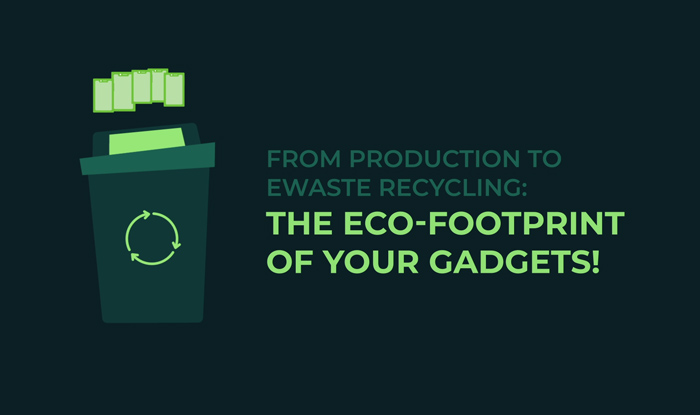When you decide to live sustainably, one of the first decisions you make is to ensure you’re not adding to the problem. One way to do that is to arm yourself with knowledge. Knowing stuff like how much water goes into making your cell phone.
Nearly 13 tons.
How many metals are used to make one smartphone?
62 metals, and all of them irreplaceable.
Can we recover some of these precious raw materials when we recycle our e-waste?
Most definitely.
How much do you think?
According to the report by the UN Environmental Program, we can typically find 100x more gold in every tonne of e-waste than we could ever obtain from a tonne of actual gold ore.
Every year, we generate millions of metric tons of e-waste, recycling only a fraction of it. This complete disregard for environmental health and the earth’s finite resources has resulted in a loss of $57 billion to the world’s economy. It has also severely diminished the earth’s capacity to regenerate its resources. At the pace we’re going, experts warn, we’re going to need the equivalent of 1.7 Earths to fulfill our consumption needs.
While this ecological impact is catastrophic, let us not forget the purely human cost of this relentless obsession with the latest gadgets. In many parts of the world, the raw materials needed to manufacture most tech devices are extracted in a way that heightens regional conflicts and causes grave human rights abuses, violence against children, forced child labor, and other great evils.
Manufacturing is also the phase that’s the most contaminating to the earth. 80% of a digital gadget’s carbon footprint is created at the manufacturing stage. The usage phase is also detrimental but in a specific way. The way our tech devices are created, they are built with a planned end date in mind. After this date, no matter how careful you were with your device, one or more of its components will show signs of wearing — usually battery or storage — forcing consumers to buy newer devices.
Even if you recycle the discarded tech, it comes with its own set of challenges, the least of which is easy access to responsible and ethical recycling services.
| Material | Recoverability | Challenges |
|
Gold |
High | Labor-intensive extraction |
|
Plastic |
Low–medium | Mixed plastics are hard to separate |
|
Rare earth metals |
Very low | Complex chemical separation |
So when you are thinking about the ecological footprint of your next tech purchase, keep these extreme figures in mind before you place your order or swipe your card.
To ensure you are doing your job of reducing e-waste in the world, make residential e-waste recycling and commercial e-waste recycling central to your living.
FAQs
How can I tell if a recycling service is certified or responsible?
Look for certifications such as R2 (Responsible Recycling) or e-Stewards, which ensure that recyclers follow strict environmental and ethical standards. You can also check whether the service provides transparent reporting on how materials are processed. Certified recyclers guarantee safe handling and proper downstream partners.
Can donating old electronics be better than recycling them?
Yes. If your device is still functional, donating it can extend its life and reduce demand for new manufacturing. Schools, nonprofits, and community programs often accept used tech. Once the device is no longer usable, recycling becomes the best option.
Why is improper e-waste disposal harmful to human health?
E-waste often contains toxic substances like lead, mercury, flame retardants, and cadmium. When dumped improperly, these chemicals can leach into soil and water, causing health issues for nearby communities. Safe recycling prevents exposure and protects both people and ecosystems.


Leave a Reply